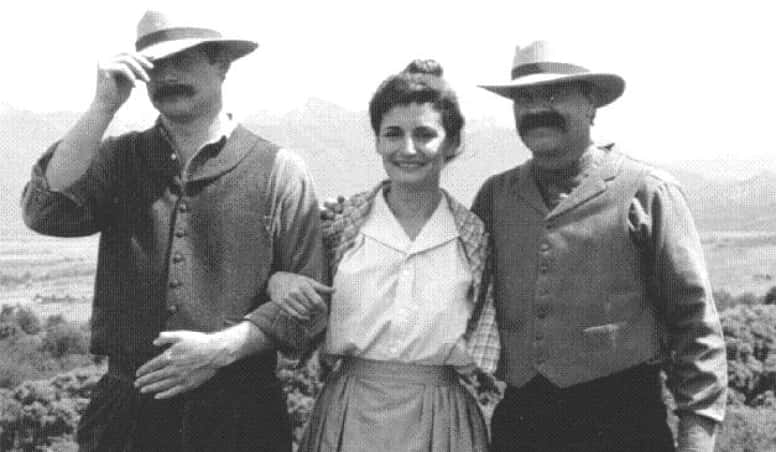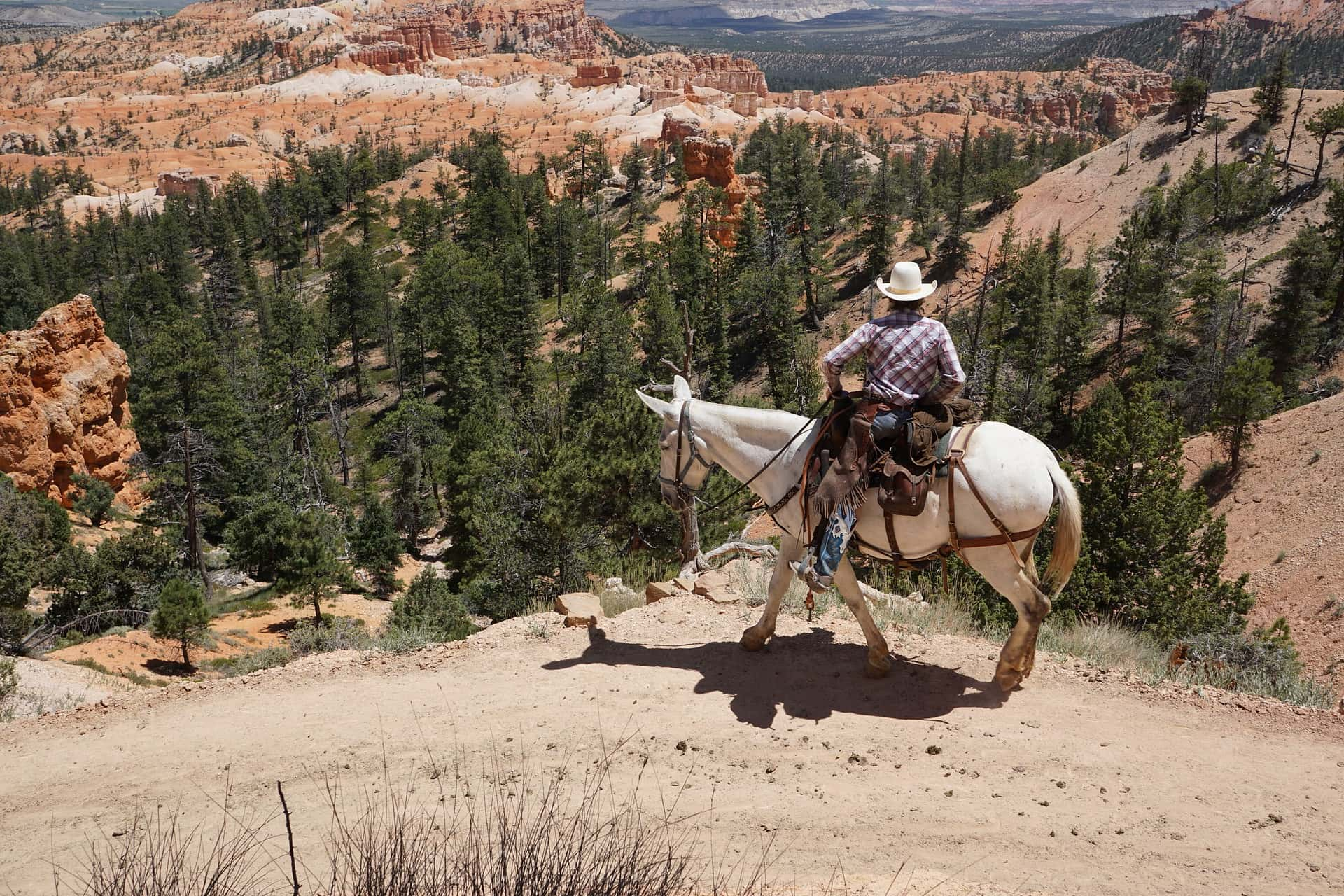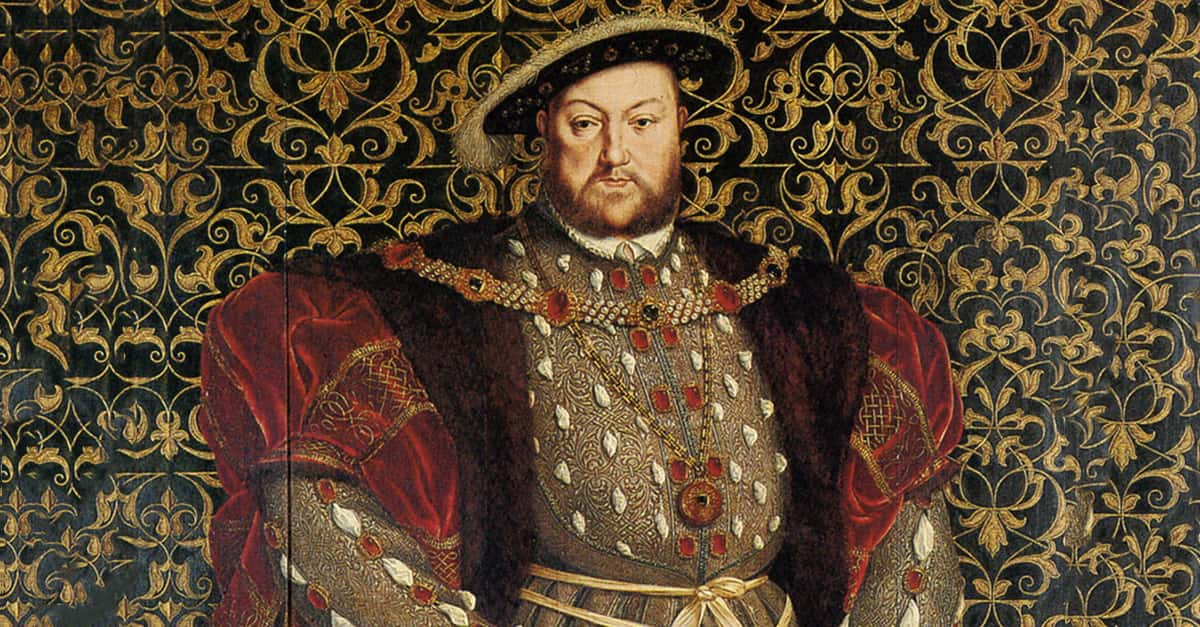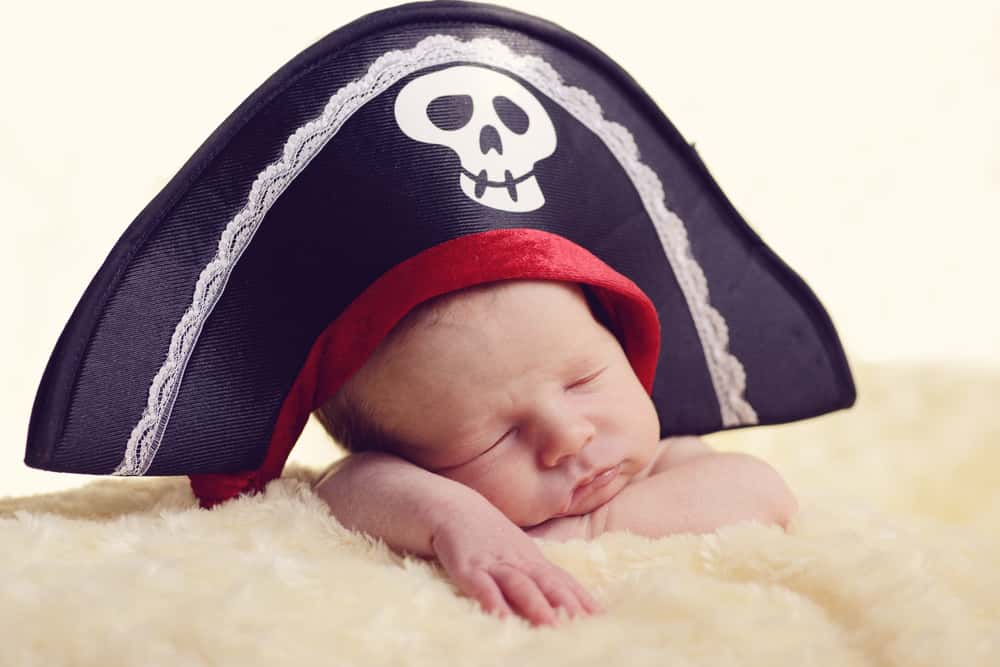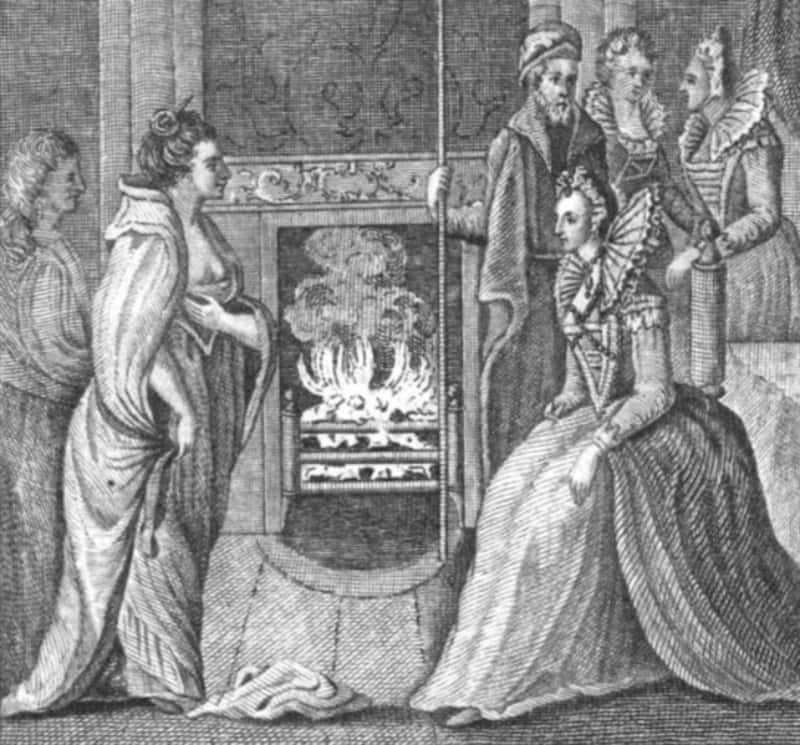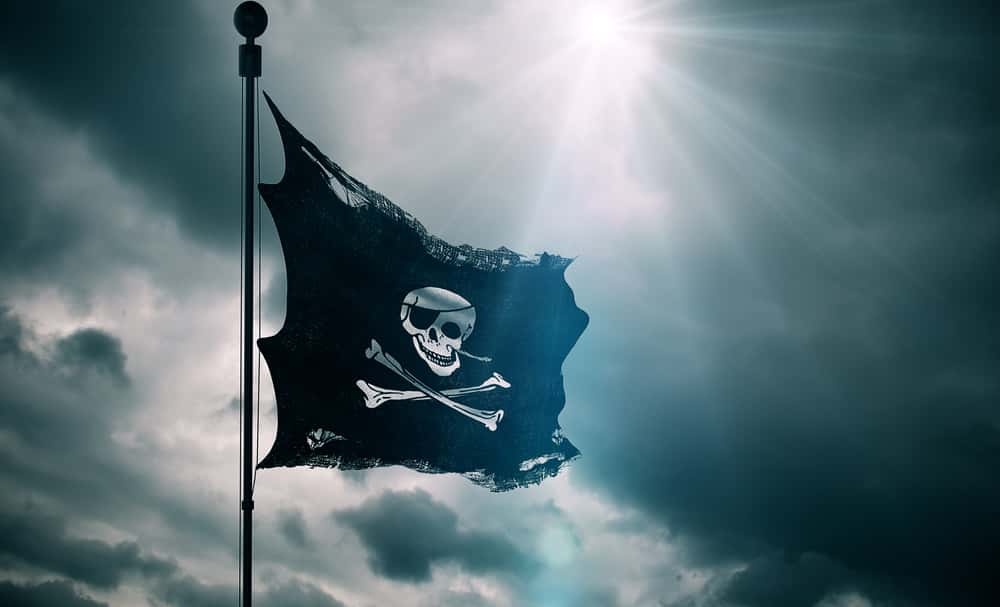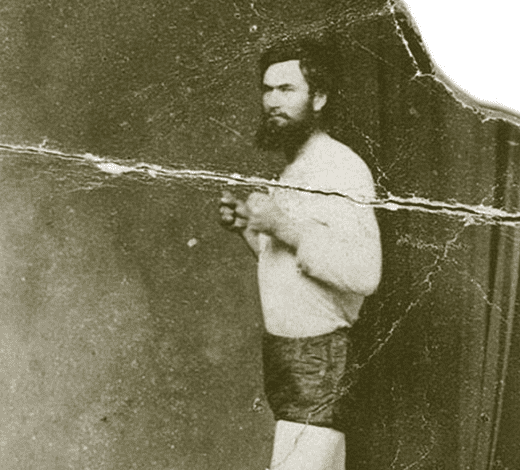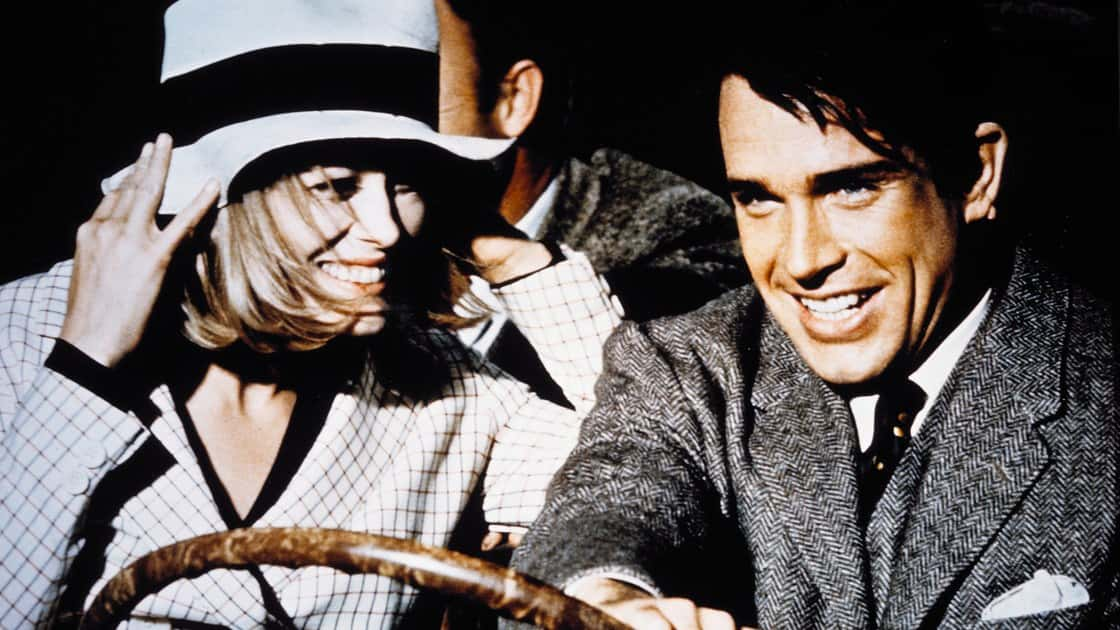Despite their violent deeds, there's something undeniably romantic about Outlaws, throwing off the shackles of society and taking their lives into their own hands. From vigilantes to bank robbers to pirate queens, history has more bandits and brigands than you could shake a stick at. Read on to discover more about some of the most ruthless and legendary outlaws the world has ever seen!
1. Prodigal Son
Butch Cassidy was born Robert Leroy Parker on April 13, 1866 in the town of Beaver, Utah. His parents, Maximilian Parker and Ann Campbell Gillies, were both Mormons. It’s safe to say that Cassidy did not adhere to his parents’ faith!
2. An Outlaw By Any Other Name
“Butch Cassidy” was just the most well-known moniker that Cassidy used. During his life, Cassidy was also known by the nicknames Jim Lowe, George Cassidy, and Santiago Maxwell.
3. Life Shouldn’t Work Like That!
Cassidy’s life of crime first began when he was around 14 years old. He went into town to buy a new pair of overalls (or jeans, depending on the source) for himself. He found the store to be closed, so he helped himself to a pair that he liked and left a note promising to return with payment for the clothes. Allegedly, Cassidy grew up with the idea that a man kept his word, and that his word would be enough in any agreement.
The store owner put more faith in capitalism, however; he pressed charges against the young Cassidy for stealing his merchandise. According to sources, this left Cassidy humiliated and disillusioned with his society.
4. The Beginning of a Criminal Career
On the 24th of June 1889, the San Miguel Valley Bank in the town of Telluride was robbed by a group of four men. Two of them were brothers of the McCarty family, while the other two were Cassidy and his friend Matt Warner. The robbery was a success for the men, netting them $21,000 (which would be worth $586,000 in 2018).
It was the first bank robbery that Cassidy ever participated in, and it certainly wasn’t the last.
5. Not Exactly a Jailbird
For all his actions as a criminal, Cassidy only received one jail sentence in his life, and it wasn’t for bank or train robbery. In 1894, Cassidy was arrested for horse thieving and sentenced to two years in prison. However, his good behavior caused him to be released after eighteen months.
6. A Soft Reboot
In the early 1890s, a ruthless outlaw gang known as the Wild Bunch spent their years of existence committing robberies and murders before most of them met brutal ends. In 1899, a new Wild Bunch was founded, with Cassidy as its most well-known member. Unlike the first Wild Bunch, however, Cassidy’s gang tried to avoid committing violence if they could rob bloodlessly (their track record wasn’t perfect, though).
7. No Battling Sexes Here
While the original Wild Bunch was all men, Cassidy’s Wild Bunch included several female outlaws amongst their members and associates. The sisters Ann and Josie Bassett were ranchers who supplied the outlaws with food and horses. Laura Bullion would ride with the Wild Bunch and spend time in jail for her criminal activities.
However, she would go on to put the outlaw life behind her, outliving Cassidy by more than forty years!
8. Fleeting Affair
Speaking of Ann Bassett, she and Cassidy would go on to have a romantic relationship that lasted for seven years. This relationship was marred by long absences on Cassidy’s part, however, including his eighteen-month prison sentence. When Cassidy chose to leave the US behind (more on that later), he never saw Bassett again, as far as anyone knows anyway.
9. All in One Day
On the 13th of August 1896, members of the Wild Bunch, including Cassidy, successfully committed a bank robbery. The men stole $7,000 from a bank in Montpelier, Idaho. In case you can’t automatically convert that sum into 2019 money, we’ll tell you: Cassidy and his associates robbed more than $200,000 that day.

Sign up to our newsletter.
History’s most fascinating stories and darkest secrets, delivered to your inbox daily. Making distraction rewarding since 2017.
10. Dynamic Duo
It was after the robbery of the Montpelier bank in 1896 that Cassidy first met Harry Alonzo Longabaugh, better known as the Sundance Kid. The two would-be associates for the rest of their lives.
11. Not Exactly the Bat Cave, but We’ll Take It
As anyone will tell you, all respectable criminals or gangs need a good hideout to avoid pursuit. In the case of Cassidy and the Wild Bunch, they made use of a remote region in southeastern Utah. Known as Robbers Roost, the Wild Bunch gang constructed cabins within the canyons of the area and managed to keep their location secret from the authorities. Eventually, the location did get out, and Robbers Roost is now a popular attraction for hikers and horseback riders.
12. Escalation
In 1899, Cassidy and the rest of his Wild Bunch reached widespread notoriety when they robbed a passenger train belonging to Union Pacific in Wyoming. This prompted a variety of lawmen to pursue the gang without success. As for Cassidy’s gang, they got caught in a number of shootouts with the law, adding murder to the list of charges against them.
One of the first men they killed was Sheriff Joe Hazen. As you can imagine, this only heightened the law’s pursuit of them.
13. Change of Scenery
It’s uncertain whether Cassidy and the Sundance Kid left the US together or whether they left separately and only reunited later on. Whatever the case, Cassidy and the Sundance Kid eventually left their home country to avoid the attention of the law, traveling to Argentina in 1901. Also with them was the Sundance Kid’s partner, Etta Place.
14. A Leopard Can’t Change its Spots
Once in Argentina, Cassidy, the Sundance Kid, and Etta Place initially purchased a ranch to settle down in and live a quiet life. However, the two men soon went back to robberies. One of the robberies attributed to them occurred on February 14, 1905, at the Rio Gallegos bank. The loot they stole would have been worth around $100,000 in modern-day currency.
15. I’m a Nice Guy!
For all his criminal activity, Cassidy became famous for his polite demeanor and his aversion to violence. Certainly, he was happy to use guns to intimidate or threaten, but he actually boasted that he had never once killed anyone in his life. Seems a rather odd thing for a criminal to be proud of, but it seems to have worked for him, at least for a while.
16. Life on the Run
In May 1905, authorities were closing in on Cassidy and his companions, due to the Pinkerton agency cooperating with the Argentine government. Cassidy and the trio sold their ranch and fled into Chile. For the next year or so, they would make trips into Argentina to rob more banks, only to flee into Chile to avoid the authorities.
While this setup seemed successful for a time, it was in 1906 that Etta Place had had enough of this kind of living and returned to the US.
17. Outlaws in Disguise
As he’d done in the US, Cassidy resorted to robbing payrolls as they were being delivered to remote locations while in South America. He and the Sundance Kid were in Bolivia at this point, and their day job was, ironically, guarding a payroll for a mining company! It was a move that’s either very clever or very obvious, depending on how you look at it.
18. We’ve Overstayed Our Welcome
One of the reasons that Cassidy left the US was the dissolution of the Wild Bunch following one of their biggest robberies. On the 3rd of July 1901, holding up a train in Montana netted the gang the equivalent of nearly $2 million in 2019 currency! This was, however, their last hurrah, as the gang split up, only for the individual members to be either killed or arrested by authorities.
Cassidy saw the writing on the wall and hightailed it out of the US.
19. A Violent End
The accepted story of Cassidy’s death is that he and the Sundance Kid were in San Vicente, Bolivia, on the 3rd of November 1908. They had previously robbed a payroll near the town, taking one of the company mules. Stupidly, Cassidy and the Sundance Kid had brought the mule with them into town, and someone recognized it. A cavalry unit stationed nearby was alerted by the locals and a shootout commenced in earnest.
Cassidy and the Sundance Kid barricaded themselves in a local house, which was surrounded by the authorities and hit with repeated volleys of gunfire. The two outlaws’ bodies were eventually recovered, riddled with bullets. Two of said bullet wounds, however, were placed so that it seemed like Cassidy may have killed the Sundance Kid in an act of mercy before turning the gun on himself as well.
20. Rumors of My Death…
Despite his alleged death in Bolivia, many have suspected that Cassidy didn’t actually die in a shootout. In the late 20th century, a team of researchers located the graves where Cassidy and the Sundance Kid allegedly lay and exhumed the remains. We’re not sure how this could be confirmed, but the researchers determined that these two corpses weren’t Cassidy or the Sundance Kid.
Meanwhile, there were several unconfirmed sightings of Cassidy after his supposed death. According to these sightings, Cassidy made his way back to the United States and lived peacefully in anonymity. We’ll never truly know the truth for sure.
21. A Fitting Moniker
As a pirate/privateer in the English Channel during the Hundred Years War, Jeanne de Clisson was known as “The Lioness of Brittany.” She got this nickname because she was known to raid villages or towns and slaughter their populations, leaving only a few survivors to spread the word that de Clisson’s wrath was not to be trifled with.
22. Starting Early
Back in the 14th century, the short lifespan of the average person meant that people started adulting at an appallingly young age. This was the same situation for de Clisson. At the age of 12, she was married to Geoffrey de Châteaubriant VIII, a 19-year old nobleman in Brittany.
23. Out with the Old, in with the New
In 1326, de Clisson’s first husband died. They’d had two children together when de Clisson was still a teenager. De Clisson quickly remarried, to Guy de Penthièvre, less than two years later. It's believed she made this match in order to support her two young ones.
24. Dodged a Bullet!
Unfortunately for de Clisson, this second marriage was annulled by the Pope in 1330, thanks to some meddling by the family of her new husband's first wife. Ironically, Guy of Penthièvre would die shortly after getting married yet again.
25. Over a Dozen Years? Sounds Like Real Love!
The same year that de Clisson’s second marriage was annulled, she got married for a third time, to the man who would give her the surname by which she is known. This man was Olivier de Clisson, the fourth person in his family to hold that name. He would be married to de Clisson for around thirteen years and they would have five children together.
26. I Existed!
It has been argued frequently that such a figure as de Clisson couldn’t possibly have existed. A swashbuckling, merciless pirate bent on revenge, and a woman to boot? No way...yet there are several historical sources that confirm her existence. These include several historical chronicles, French court records listing her as a traitor, and even the 1347 Treaty of Calais, which named de Clisson as an English ally.
27. We’ve Had Better Days
In 1342, the English laid a series of sieges against the Breton town of Vannes, whose garrison was commanded by de Clisson’s third husband, Olivier de Clisson. Eventually, the town fell to the besiegers and Olivier was captured, but he was ransomed back to Charles de Blois.
28. Catelyn Stark Sends Her Sympathies
Due to the surprisingly low asking price that the English asked for Olivier, Blois started to believe that the man had betrayed him. In 1343, Olivier was invited to a tournament outside of Brittany, where he was then ambushed, arrested, and put on trial for treason. He was executed in Paris that year, much to the shock of his wife.
29. It’s on Now!
While we’ll never know if de Clisson’s third husband really was a traitor, she was firmly convinced that his death was an act of murder by Charles de Blois and the King of France. The fact that no evidence was presented to prove Olivier's guilt only made her more convinced. Swearing revenge, she sold off the entirety of her husband’s lands and her personal possessions to raise a small army of troops.
30. The Blood of Angry Men!
Since she was attacking her former allies anyway, it made sense for de Clisson to go whole hog and switch sides. The English and their Breton allies were only too happy to supply her, which led to de Clisson taking to the sea. She formed a small fleet of ships that eventually came to be known as the Black Fleet, for the color that the wood was painted.
They were also decked out with red sails, in case anyone was confused by de Clisson’s vengeful purpose.
31. “Wrath of Jeanne” was Too On-The-Nose
In case anyone was confused by de Clisson’s intent when she outfitted a small fleet of ships, she named her flagship My Revenge. It’s safe to say that this was the most fitting name for a ship in French history!
32. Love Match
Unlike most marriages at the time, it seems that Olivier and Jeanne de Clisson married for love—which made Olivier’s betrayal and execution all the more painful.
33. A Grim Reminder
After Olivier de Clisson was executed, his body was put in a Gibbet in Paris, while his head was sent to Nantes. Filled with grief and rage, Jeanne took her sons to Nantes to show them their father’s head and remind them that he’d been murdered by Charles de Blois and the King of France.
34. It’s Almost Poetic
In total, de Clisson’s time as a vengeful pirate would last 13 years. We’d like to think that she pirated one year for every year that she’d been married to her third husband, for whom she’d turned rogue in the first place. It really seems too fitting to dismiss!
35. An Axe to Grind
According to legend, the few survivors of the Black Fleet's massacres always told the same story. The pirates would board French ships and slaughter nearly everyone inside, while de Clisson herself would personally behead any nobles with her wicked ax—a fitting revenge for her husband’s grim demise.
36. Spread the Word!
Before all the piracy, the very first of de Clisson’s actions in revenge for her third husband’s execution was an attack on the castle of Touffou. Loyal to Charles de Blois, the castle resisted de Clisson’s assault but eventually fell. On de Clisson’s orders, all but one of the castle’s population was massacred.
37. Setting the Scene
The infamous pirate queen Grace O’Malley grew up with her family in County Mayo. When O’Malley was first born, King Henry VIII of England technically ruled over the Irish lords and princes. However, the local rulers were more or less allowed to run their own affairs without much interference from England. As O’Malley grew up, however, this would change drastically.
38. Like a Kardashian
O’Malley was actually born into pirate royalty. Her father was the chieftain of the clan and was called Owen “Black Oak” O’Malley. The family had a long history with the sea and was also known to make a living off being part-time pirates. So really, O’Malley was only continuing the family tradition.
39. Is Eowyn Based on Her?
One legend which survives about O’Malley’s childhood is that she wanted to go with her father on a voyage, but she was refused because she was a little girl. In defiance, she cut her hair, dressed as a boy, and joined the crew before anyone could uncover her disguise.
40. It’s Better Than Hakuna Matata!
The motto of O’Malley’s family was the Latin expression “terra marique putens.” Translated into English, this means “valiant by sea or by land.” It’s safe to say that O’Malley lived up to that philosophy.
41. An Abrupt End
After 19 years of marriage and three children, O’Malley’s husband, Donal O’Flaherty, was hunting around Lough Corrib when he was ambushed and killed. This was likely due to a dispute between the clans over property. Following the death of O’Flaherty, O’Malley took her family and most of O’Flaherty’s former followers back to her own family’s territory.
42. No Way! Right?
According to the legends, O’Malley gave birth to her third son on board a ship that was attacked by pirates just an hour later! Incredibly, the hot-blooded Irishwoman allegedly stowed her newborn inside her cabin and personally led the counter-attack—again, just an hour after giving birth. Whether this makes the story unbelievable or unbelievably metal is up to you.
43. Tough Love
One anecdote about O’Malley involves her berating one of her sons during an assault upon Kinturk Castle. When she was convinced that he was hiding from the worst of the fighting, the fiery pirate queen supposedly exclaimed in Gaelic, "Are you trying to hide in my arse, the place that you came out of?" Frankly, that might be among the worst kinds of reprimand that any son’s ever had from their mother!
44. The English Strike Back
Clashes between O’Malley and the English resulted in the death of her eldest son, Owen. Known for his kind and generous disposition, Owen was tricked out of his castle by Richard Bingham when Bingham stole cattle which belonged to Owen. Bingham not only captured Owen, he also murdered the young man and took his castle to boot.
45. Prisoners of War
The ever-growing conflict between O’Malley and the English reached its apex when Richard Bingham, having already murdered one of O’Malley’s sons, succeeded in taking her other sons as prisoners, as well as O’Malley’s half-brother. Rather than surrender, though, O’Malley had another idea. She sent a message directly to Queen Elizabeth of England to arrange a meeting.
46. You Don’t Scare Me!
Incredibly, despite the fact that two of her sons and her half-brother were being held as hostages by the English, O’Malley famously refused to bow before Queen Elizabeth I when the two women met at Greenwich Palace. O’Malley stated that she would not recognize Elizabeth’s authority over Ireland, and besides, she herself was a queen in her own right. We can only hope that she had a mic to drop in that moment.
47. Death to the Queen?
If the sources can be trusted, the meeting between O’Malley and Queen Elizabeth was rife with tension. For one thing, O’Malley arrived at the meeting with a knife hidden on her person. When Elizabeth’s guards and courtiers were understandably alarmed at finding the knife during a body search, O’Malley explained that she carried the knife for her own protection.
48. Imagine All Those Popping Monocles
The secret knife discovery wasn’t the end of the tension at O’Malley and Elizabeth’s meeting. At one point, O’Malley shocked the English members of the meeting when she brazenly blew her nose into a handkerchief and threw it in the fire. She actually had to tell Elizabeth that in Irish culture, a used handkerchief was immediately thrown away rather than reused.
49. A Hasty Divorce
O’Malley married a second time in 1566 to “Iron” Richard Burke—so named for his territory’s famous ironworks. While O’Malley would have a fourth child, this second marriage barely lasted a year. Allegedly, O’Malley made it clear that things were over between her and Burke when she leaned out of a window and screamed, “Richard Burke, I dismiss you!” Ouch…
50. A True Compromise
During her famous meeting with Queen Elizabeth I of England, O’Malley was hampered by the fact that she spoke no English. Elizabeth, meanwhile, could not speak Irish Gaelic, so both women conversed in Latin.
51. So Nothing Changed?
Aside from the release of her family members, O’Malley made some other demands from Queen Elizabeth in exchange for her withdrawal from conflict and piracy. One was that Richard Bingham return the castle and land that he had stolen from her and her eldest son. Another was that Bingham be removed from his post in Connaught.
Although Elizabeth did recall Bingham as requested, she neither returned the stolen property nor did she even keep Bingham away that long before reassigning him to Connaught. As a result, O’Malley went back to supporting Irish rebels, specifically during the Nine Year’s War from 1594 to 1603.
52. Hi There!
One of the more romantic anecdotes about O’Malley involved her rescuing a shipwrecked sailor named Hugh de Lacy in the 1560s. After this meet cute, de Lacy and O’Malley would become lovers.
53. It’s Totally Personal!
O’Malley’s affair with Hugh de Lacy was sadly short-lived due to O’Malley’s many enemies. In particular, the MacMahon clan wanted to hit O’Malley where it hurt most. In an eerie parallel to the death of O’Malley’s first husband, de Lacy was murdered while out hunting. Of course, this led to O’Malley reaping bloody revenge against the MacMahons. She seized Donna Castle, owned by the MacMahons, and brutally slaughtered the clan that had orchestrated her lover’s death.
54. How Symmetrical
The circumstances and even the year of O’Malley’s death are unclear and disputed amongst historians. It’s known that she was a very old woman when she died (estimated between 72 and 73 years old), and she may have died the same year that her rival, Queen Elizabeth I, also passed away.
55. Sounds Like a Prequel!
Ned Kelly’s father was an Irishman named John “Red” Kelly. Born in County Tipperary in 1820, he was deported from Ireland at the age of 21 when he was convicted of stealing two pigs. John was taken to Van Dieman’s Land, which today is known as the island of Tasmania. However, John would move to the continent of Australia, traveling around doing odd jobs until he found success digging for gold.
As a result, he bought land for himself just outside of Melbourne and married Ellen Quinn in 1850. They would have eight children together, of whom Ned Kelly was the third.
56. It’s Those Kelly Boys Again…
Before Kelly himself was declared an outlaw, neighboring farmers threw an incredible amount of accusations at him and other members of his family, usually for stealing livestock. Many have argued that this was a case of their community turning on them unfairly due to Red Kelly’s past, while others say that that it’s an example of the Kelly family being born to no-good behavior.
57. A Keepsake for Simpler Days
When Kelly was just a boy, he saved another boy’s life by successfully pulling him out of Hughes Creek. As a reward, the boy’s grateful family gifted the young Kelly with a green sash. Kelly must have been very proud of this sash because he was wearing it under his armor when he was finally cornered and taken prisoner—more on that later.
58. Any Last Words?
Kelly allegedly uttered the simple phrase “Such is life” as his final statement while he was alive. However, as much as this has been embraced as being fact, there is some cause for uncertainty. One reporter who bore witness to Kelly’s execution declared that Kelly actually said “Ah well! It’s come to this at last.”
Meanwhile, the prison warden had been standing closer to Kelly than almost anyone there and his diary entry claimed that while Kelly said something, it was impossible for the warden to hear him. So either the warden was practically deaf, or people invented a lie which had Kelly give one of the most laconic last words in human history.
59. Necessity is the Mother of Invention
The famous suits of armor that the Kelly gang wore were constructed from plow moldboards which were either gifted to them by their allies or stolen by the Kelly gang from farms. Although crude, the iron suits of armor were strong enough to repel bullets fired by the guns of the time. However, they were incredibly heavy to wear, which proved a problematic disadvantage.
 Flickr
Flickr
60. Police Brutality
In 1871, an incident over a mare led Kelly to become embroiled in criminal charges mere weeks after he’d come back from jail! Things began innocently enough; a man named Isaiah “Wild” Wright visited the Kelly family, riding a particularly fine mare that he’d allegedly borrowed. The mare went missing, but Kelly’s brother-in-law, Alex Gunn, loaned Wright another horse and promised to find and hold onto the mare until Wright returned. Kelly and Gunn found the mare, and while they waited for Wright to return, Kelly used the mare to ride to Wangaratta.
While there, however, Kelly was accosted by a police officer who suspected Kelly of having stolen the horse. Kelly reacted with violence when he was first deceived and then attacked by the officer. Bystanders came to the officer’s aid, who proceeded to pistol-whip Kelly until his head was “a mass of raw and bleeding flesh.”
 Public Domain Files
Public Domain Files
61. Well-Mannered Young Man
Following his brutal arrest, it was revealed that Isaiah Wright had stolen the mare. Kelly and his brother-in-law, Alex Gunn, were sentenced to three years hard labor. However, this was reduced for Kelly due to good behavior.
 shutterstock
shutterstock
62. Time for Fisticuffs!
Naturally, Kelly was furious with Isaiah Wright for having gotten him arrested for being involved in the theft of the mare. To settle things between them, Kelly challenged Wright to a bare-knuckle boxing match. The bout took place on August 8, 1874, at the Beechworth Imperial Hotel. After twenty rounds, Wright was defeated and later became one of Kelly’s allies, because that’s how Australians become friends, apparently.
63. Fitzpatrick Said
In April 1878, a constable named Alexander Fitzpatrick traveled to the Kelly residence, claiming that he had a warrant for Kelly’s brother, Dan. Despite a special police policy of having at least two constables go to the Kelly residence to act on warrants, Fitzpatrick went alone. According to Fitzpatrick, he arrested Dan, but allowed him to have dinner with his family before they left.
Sitting next to his prisoner at the dinner table, Fitzpatrick was allegedly attacked by Kelly himself, who shot the constable in the arm. The family, including Kelly’s mother and his brothers-in-law, incapacitated Fitzpatrick and extracted Kelly’s bullet out of Fitzpatrick’s arm to avoid creating evidence. Fitzpatrick claimed that he was permitted to leave once he’d promised to forget the incident and make no reports.
Naturally, this promise was cheerfully broken once Fitzpatrick was safe.
64. Kelly Said
Kelly maintained that Fitzpatrick was a filthy liar. According to Kelly, Fitzpatrick only had a telegram rather than a warrant, which caused Kelly’s mother, Ellen, to claim that Dan didn’t have to go with the officer. Fitzpatrick threatened to shoot Ellen if she interfered with the arrest, while Dan was able to wrest the constable’s gun out of his hands on his own without anyone’s help.
Kelly, meanwhile, was supposedly nowhere near the family residence when this incident happened. Fitzpatrick’s injuries were supposedly self-inflicted.
65. Kangaroo Court
Following the Fitzpatrick incident, a trial was held against Kelly’s mother Ellen Kelly, brother-in-law Bill Skillion, and neighbor Bricky Williamson. Fitzpatrick was reported to be drunk at the trial, and the doctor couldn’t confirm that his injury was due to gunfire. Of course, it didn’t hurt Fitzpatrick that the jury was made up of ex-police officers and people who disliked the Kelly family.
Ellen received three years hard labor, while Skillion and Williamson received six. An attempt to pay Ellen’s bail was refused, condemning her to the prison sentence. As for Fitzpatrick, he would later lose his job with the police for perjury and drunkenness. Suddenly we’re not surprised that Kelly went rogue!
66. Stringybark Creek
Kelly and his brother Dan weren’t arrested with their mother, and when they heard about how the trial went down, they disappeared into the bush along with Joe Byrne and Steve Hart. In order to root them out, two groups of policemen went into the area where the Kelly gang was supposed to be hiding. Of course, trying to hunt down Kelly in the bush was a bad idea.
While both sides told different versions of what happened, the end result of the confrontations was that three police officers were killed.
67. Crikey, Let’s Crack Down!
Because of the policemen killed at Stringybark Creek, the parliament of Victoria outlawed the Kelly gang with the Felons’ Apprehension Act, which went into effect on November 1, 1878. Not only was it now legal to kill the outlaws, but anyone who aided them faced a sentence of at least 15 years in prison or hard labor.
68. The Australian Showdown of the Century
In 1880, the Kelly gang embarked on their most ruthless plan of all; after murdering Aaron Sherritt on the suspicion that he was a police informant, the Kelly gang rode to the town of Glenrowan. They knew that a police train would be arriving from Benalla when the alarm was sent out. As a result, Kelly and his gang planned to derail the train, killing everyone aboard.
They would then raise hell in Benalla by freeing the prisoners from the jail, robbing the bank, and so on. However, when a townsman warned the police of the trap, the plan was foiled. Police forces opened fire on the outlaws, who were pinned down in McDonnell’s Railway Hotel.
69. A Pox on You!
During his trial, Kelly made a grim promise to his judge, Sir Redmond Barry. He swore that they would see each other again after death. Hauntingly, Barry would follow Kelly into the grave less than two weeks after the latter’s execution. While the cause of death was reported to be “a combination of pneumonia and septicemia from an untreated carbuncle,” there were some who embellished the story to describe Kelly successfully cursing his judge to die a painful death.

70. Priorities, Lady
Kelly’s mother, Ellen, was permitted to see him one last time before her son was executed. Reportedly, her last words to her condemned son were “[Make sure] you die like a Kelly.” She herself would live until 1923, dying at the ripe old age of 95.
71. The Other Man
Bonnie Parker and Clyde Barrow weren’t legally married. Nope. Sorry folks. We apologize to burst the bubble. Bonnie was actually married to a man named Roy Thornton, and even wore her wedding ring until the day she died. She also had a tattoo on her knee with their names and intertwined hearts.
72. Love at First Sight
Bonnie was only 19 when she met Clyde Barrow, who had already spent time in prison. He was even on the run at the time they were introduced! He was caught within weeks, though, and thrown back behind bars.
73. They Would Do Anything For Love
No jail cell could keep Bonnie and Clyde apart, and they were in love already. Bonnie managed to smuggle a gun into the jail, much to her mother’s disapproval. He and his cellmates managed to escape, but once again were caught. Clyde was sentenced to hard labor for 14 years and sent to Eastham State Farm.
74. Brotherly Love
One of Clyde’s older brothers was the main influence on his life of crime. Buck convinced the younger Clyde into petty thefts, which soon turned into stealing cars and then escalated further to armed robbery.
75. Twist of Fate
Years later, just a year before the famous duo were killed, they would live with Clyde's brother Buck and his wife Blanche in Joplin, Missouri, but police caught up with them there; the altercation ended in a shootout, the death of two cops, and the escape of the criminals.
76. The Couple Who Is Buried Together, Stays Together
Bonnie and Clyde wanted to be buried together, so much was their love for each other—but their greatest wish was never fulfilled. Upon their deaths, they were buried separately. Bonnie's mother didn’t approve of the relationship her daughter had with Clyde and reversed their wishes. Thousands of people went to each of their funerals in Dallas, with newspapers even publishing special editions!
77. Big Dreams Bonnie
It’s a little surprising that Bonnie got herself into a life of crime: She was an honor student, had hopes of becoming an actress, and liked to write poetry. In fact, before she and Clyde were caught, she wrote a poem entitled “The Story of Bonnie and Clyde.” Naturally, it was published in a number of newspapers after their deaths.
78. Light 'Em Up
Bonnie's acting hopes came early. You would often find her on stage performing in talent shows or school pageants. She always told her friends that her name would one day be in lights. She wasn’t technically wrong, but it wouldn’t be for what she had hoped for.
79. Beginning of the End
The Barrow gang committed multiple murders. Clyde himself killed a police officer as well as the owner of a store. One member of the gang, Henry Methvin, murdered a cop in Oklahoma—an act that would bring about the demise of Bonnie and Clyde.
80. The Big Betrayal
Bonnie and Clyde, feeling the heat from the murders, took refuge in the Methvin farm in Louisiana to hole themselves up until things died down. But Methvin's father was hoping for leniency for his son's crimes and turned to the police to set up an ambush. On May 23, 1934, Bonnie and Clyde were driving along when they saw the elder Methvin apparently broken down at the side of the road.
The duo went to help him, and the police, who had been lying in wait, opened fire.
81. Die Young
There are reportedly 150 bullet holes in Bonnie and Clyde's death car alone. In the autopsy, the coroner reported 17 bullets in Clyde and 26 in Bonnie. But that’s only the official account. Unofficially, there were many more. The undertaker found it difficult to keep the embalming fluid in their bodies, such was the nature of their wounds.
Ironically, the undertaker’s assistant had been kidnapped earlier by the gang, and before they released him, Bonnie jokingly gave him five dollars and asked him to take care of them when they died, not thinking he actually would.
82. By the Numbers
Bonnie and Clyde didn’t commit as many bank robberies as we think. During their four-year crime span, they really only robbed about 15 banks, and some of those they robbed multiple times. They never got away with too much money, either. It’s believed the smallest amount they ever got was $80.00.
83. Petty Thieves
Smaller robberies, like at gas stations or small grocery stores, were easier for the pair to manage between just the two of them, but they had to be done more frequently since they didn’t get a whole lot of money out of them. This also meant they couldn’t stay in any one place for too long, since these frequent crimes were much easier to track then the rarer, bigger jobs.
84. Live Fast
While driving around with Clyde during one of their sprees, Bonnie suffered a terrible leg injury during a car accident. Battery acid burned her leg so badly that she had to be carried almost everywhere after; in some spots, she was burned right down to the bone. The accident was pretty much Clyde’s fault: He had been driving too fast on a Texas road and missed the warning sign for an upcoming bridge that was under construction.
85. Why Did People Love Bonnie And Clyde?
Former speaker of the House of Representatives, Jim Wright, grew up in two of the states, Texas and Oklahoma, that Bonnie and Clyde were popular in. He once gave a quote that helps to illuminate their appeal: “Even if you did not approve of them,” he has said, “you still would have to envy them a little, to be so good-looking and rich and happy.”
86. Taking a Little Piece of Their Life
The public was infatuated with the couple. When word got out about their deaths, people descended on the scene, attempting to take souvenirs. Later, when the bodies were taken to the coroner’s office, the people went there too, just to get their hands on anything they could. There were those who wanted to cut off Clyde's ear or fingers, and some wanted to cut off pieces of Bonnie's dress, blood soaked and all.
And get this: one man offered Clyde’s father cash money for his body. This man offered $30,000, which today would be well over $600,000.
87. Words to Remember Them by
The epitaphs on Bonnie and Clyde's separate tombstones couldn’t be more different. Clyde’s reads “gone but not forgotten,” while Bonnie's has “as the flowers are all made sweeter by the sunshine and the dew, so this old world is made brighter by the lives of folks like you.” How...nice?

88. Illinois Boy
Wyatt Earp was born on March 19, 1848, to Nicholas Porter Earp and Virginia Ann Cooksey in Monmouth, Illinois. His full name was actually Wyatt Berry Stapp Earp; he was named after his father’s commanding officer during the Mexican-American War.
89. Too Young
When the US Civil War began in 1861, Earp’s older brothers Newton, James and Virgil enlisted in the Union Army. Earp also tried to enlist several times, even running away from home to find the recruiting sergeant. The problem was that he was just thirteen years old. His father would continually have to be called up to drag him home.
90. Reunion of Legends
In 1879, Earp and his brother James left Dodge City with their common-law wives. They’d been told by their brother, Virgil, of the silver mines near the town of Tombstone in Cochise County. Earp was also reunited with his friend Doc Holliday, who’d also come to Tombstone.
91. Yee-Haw!
While Earp and his brothers settled in Tombstone, they ran afoul of an outlaw faction known as the Cochise County Cowboys. While you might be puzzled over such a bland name as “Cowboys” being used for a gang, keep in mind that legitimate cowboys were never actually called that back then (the proper term would have been “ranchers” or “cattle herders”).
Earp and his brother Virgil both became sworn men of the law, which meant that it fell to them to keep the peace in Tombstone.
92. Love Square
When he arrived in Tombstone, Earp was in a common-law marriage to a woman named Mattie Blaylock. However, their relationship soured while they lived in Tombstone, and Earp soon met the love of his life. Josephine Marcus’s life is shrouded in mystery, but what is known for sure is that she was initially in a relationship with Johnny Behan.
However, she fell for Earp instead, leading to a deep rivalry between the two men.
93. The Gathering Storm Clouds
Run-ins and disputes caused a deep rift to develop between the Cowboys (especially the Clanton and McLaury families) and the Earps. Ike Clanton also had a bone to pick with Doc Holliday, who was Earp’s most loyal friend. Things came to a head on October 26, 1881, when Ike and Billy Clanton, with several of their Cowboy friends, rode into Tombstone armed to the teeth.
They had been talking of killing Earp and his brothers for some time by that point, and bringing guns into Tombstone was a violation of a law requiring men to give up their weapons when in town.
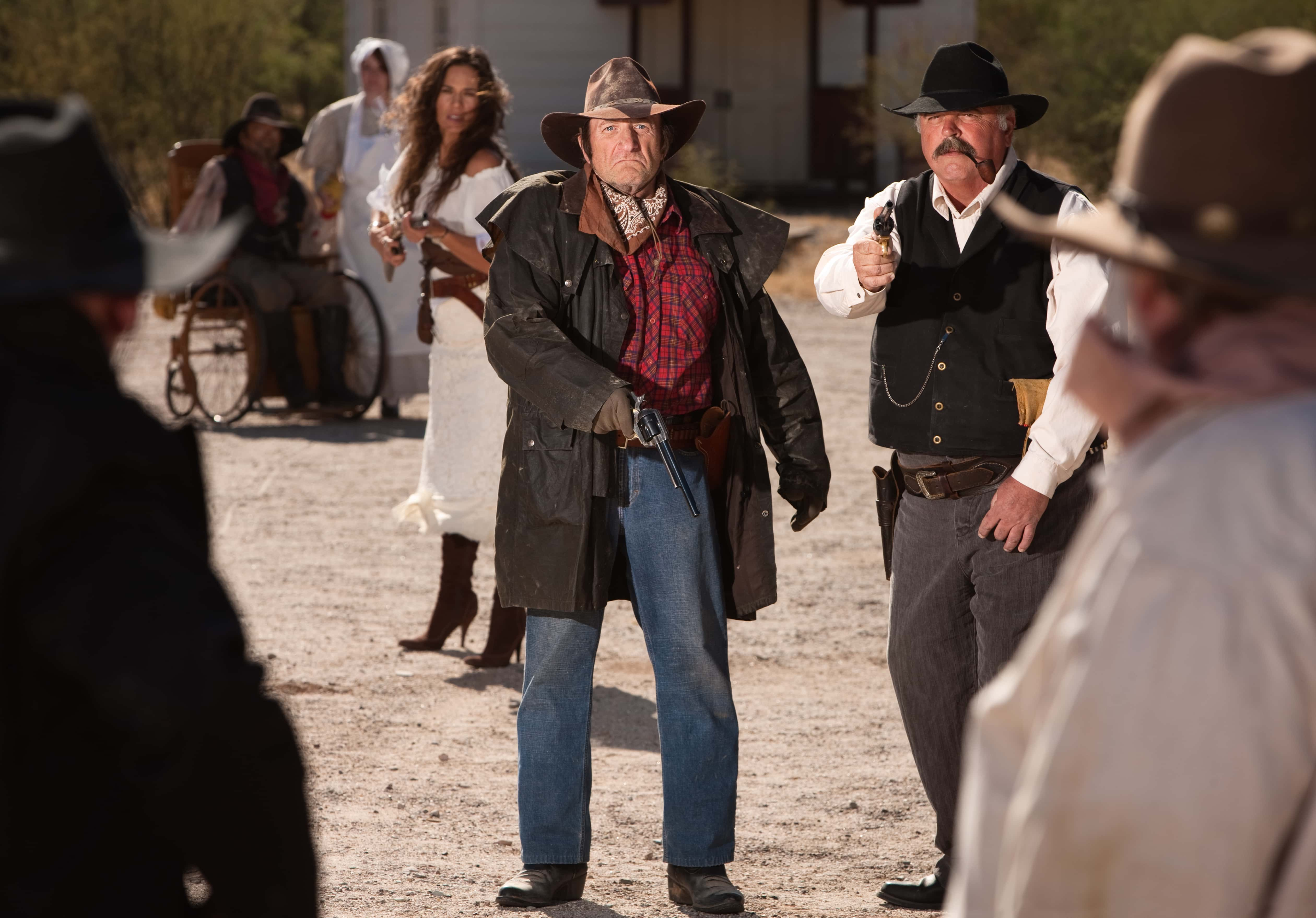 Shutterstock
Shutterstock
94. History in Motion
After an attempt by Johnny Behan to calm things down failed, Earp’s brother, Virgil, decided to disarm the Cowboys himself. Earp and Doc Holliday accompanied Earp’s brother Virgil and Morgan to the OK Corral, where Frank McLaury, Tom McLaury, Billy Clanton, Billy Claiborne, Wes Fuller, and Ike Clanton had made their stand.
95. The Gunfight at OK Corral
It would be impossible to briefly summarize the events at the OK Corral. The participants all gave conflicting accounts of the gunfight, and countless papers, books, and movies have tried to recreate what happened that day. What is known for sure is that by the end of the shootout, three of the Cowboys (Tom McLaury, Billy Clanton, and Frank McLaury) lay dead from gunshot wounds.
Virgil, Morgan, and Doc Holliday were all injured as well. Incredibly, the six or seven men involved in the whole thing had fired thirty rounds in just thirty seconds!
96. The Cowboys Strike Back
After the gunfight at the OK Corral, the surviving Cowboys tried to take revenge on Earp and the others involved. Earp was charged with murder, but not enough evidence was found to successfully convict him (again, witnesses and participants alike gave wildly different accounts of what happened). Instead, the Cowboys went outside of the law.
Earp’s brother Virgil was attacked and wounded on the 28th of December 1881, leaving him with just the use of one arm. Earp’s other brother, Morgan, was shot and killed on the 18th of March 1882 while playing billiards.
97. Blood for Blood
Following the death of Morgan, Earp and his surviving family went to put Morgan’s body on the train to take him home to Colton, California, to be buried. However, an ambush by the Cowboys was planned to intercept them in Tucson. Different accounts exist as to what happened exactly, but on the 20th of March 1882, one of the Cowboys, Frank Stilwell, was shot to death.
It’s unknown who exactly killed him, but it’s safe to say it was either Earp, Doc Holliday, or one of Earp’s other friends. When Stilwell’s body was recovered the next day, witness George Hand claimed that Stilwell was “the worst shot up man I ever saw.”
98. “You Tell ‘Em I’m Coming, and Hell’s Coming with Me, You Hear?!”
With the rank of Deputy US Marshal, Earp embarked on a vendetta ride to bring down the men who had ambushed his brothers in Tombstone. Riding with him were his brothers Warren and James, Doc Holliday, Sherman McMaster, John Vermillion, Jack Johnson, Dan Tipton, and Charles Smith. The Earp Vendetta Ride, as it was called, lasted from March 20 to April 15, 1882 and resulted in several Cowboys being killed (though movies frequently increase the number of deaths).
99. Making Way for True Love
Earp and his common-law wife Mattie would separate and divorce in 1883, though he was already in a relationship with Josephine Marcus at the time. Earp and Marcus would remain together for more than forty-six years!
100. After the Honeymoon
Of course, it wasn’t all sunshine for Wyatt and Josephine. Their relationship went through many rough patches, either because of miscarriages, Josephine’s gambling habits, or Earp’s extramarital affairs. Marcus even got a reputation for being controlling towards Earp, to the point where one of his friends joked that Earp could never be accused of cold-blooded murder because he lived with Josephine for nearly fifty years!
Shocking to her peers, Marcus didn’t go to Earp’s funeral, though it was also reported that she’d been too paralyzed by grief to do anything after he died.
101. Hate to Break Up, Love to Make Up
Despite having been best friends since Holliday saved Earp’s life in Dodge City, the two men had a bitter falling-out shortly after the Earp Vendetta Ride. They reportedly had a fight over Holliday’s use of a slur against Jewish people, referring to Earp’s growing attachment to Josephine Marcus, who was Jewish. Earp’s fury at the slur was such that they parted ways.
However, they reunited that same year when Earp prevented Holliday from being arrested for the murder of Frank Stilwell.
102. Farewell, Friend
The last time that Earp ever saw Holliday was at the Windsor Hotel in 1886. By then, Holliday was very sick from the effects of tuberculosis. According to Josephine Marcus, Holliday was on “unsteady legs,” was very thin, and couldn’t stop coughing. When Holliday died in 1887, Earp did not know about it until two months later.
103. Luck of the Earps
In one of the most remarkable moments of the Earp Vendetta Ride, Earp and his posse were traveling across the Dragoon Mountains in March 1882 when they came across the camp of several Cowboys led by Curly Bill Brocius. Both sides opened fire on each other, with the Cowboys getting the upper hand. Undeterred, Earp marched up to Brocius, who fired his shotgun at the vengeful lawman.
Miraculously, though his coat was pierced, Earp was untouched by the gunfire. He killed Brocius with his own shotgun blast, and also shot Johnny Barnes during the confrontation. Unfortunately, there is no evidence that Earp did that while screaming “NO!” over and over (sorry, Tombstone).
104. Lost Love
Long before his relationships with Josephine Marcus Earp or Mattie Blaylock—before he'd even moved west—a 22-year Earp married Urilla Sutherland. Sutherland was the daughter of the couple who ran Lamar, Missouri’s Exchange Hotel. Sadly, this first love was doomed to a tragic end. Sutherland succumbed to typhoid fever in November, just before she was due to give birth to their first child.
One can only wonder what Earp’s life would have been had he not suffered this painful saga as a young man.
105. Watch Out for Brain Freeze!
Despite the fact that he never drank, Earp wasn’t without his vices: He allegedly had a serious sweet tooth, particularly for ice cream. Luckily for him, there was a parlor that sold ice cream in Tombstone, and he was said to have visited nearly every day. We wish that part of him was put in the movies more often!
106. You Won’t Be Arresting Anyone Today!
After the death of Frank Stilwell, the Earps and their allies prepared to go after other members of the Cowboys. However, they all faced arrest warrants concerning Stilwell. Johnny Behan tried to confront Earp when he and the others were in the Cosmopolitan Hotel in Tombstone, just about to head out. Despite having brought men to arrest Earp, Behan quailed in the face of his rival.
When Behan insisted that he wanted to see Earp, Earp brushed past, declaring, “Johnny, if you’re not careful, you’ll see me once too often.” We can only assume that Earp’s companions called out “Oh snap!” as they walked past as well.














